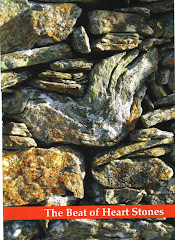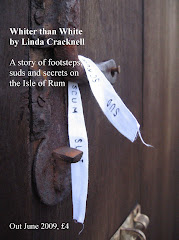
Saturday 3rd December sees the launch of '26Treasures', another quirky partnership project from the 26 Writers' collective, this time with the National Museum of Scotland. (see last post for another 26 challenge!) Sister projects are also going on in Wales and Northern Ireland.
The launch will bring together for Treasure Chatter most of the 26 writers who have been randomly matched with 26 museum objects. Together they tell Scotland's history, and the writers are diverse as the objects, from poets and novelists (such as Alexander McCall Smith, James Robertson, Sara Sheridan) to screenwriters, journalists and academics. One of the particularly challenging aspects of the task was to write about each object, in whatever form, in exactly 62 words!
I was matched with ‘The Coigrich’, the ‘crozier shrine’ of Saint Fillan, an Irish missionary active in Glendochart in the early 8th Century, on display in the Museum’s Kingdom of the Scots gallery.
The writing process is always a bit mysterious, but my mystery object turned out to have its origins just up the road from me, and had me stomping along the West Highland Way between Crianlarich and Tyndrum to discover more about the places associated with the Saint.
The writing process is always a bit mysterious, but my mystery object turned out to have its origins just up the road from me, and had me stomping along the West Highland Way between Crianlarich and Tyndrum to discover more about the places associated with the Saint.
The elaborate shrine in the shape of a crozier handle dates from the 15th century but with earlier elements including a crystal believed to have come from the original crozier. The Dewar family were its hereditary keepers, and in 1818 Archibald Dewar emigrated to Canada and took it with him. It was returned to Scotland in 1877 by his grandson. The Coigrich had an almost magical potency in a cult of people who believed it to have healing powers for their cattle.
I did a fair bit of research but the 62 word limit was a wonderful creative restriction, forcing me to choose one theme, or 'story' from many potentials. One of the things that intrigued me about the Coigrich, was that even when it left the country, Canadian Highlanders still sought it out to help their sick cattle. Such was the belief in its power over centuries. This is where I decided to focus, and then to try and crystallise language down to some essential images.
I did a fair bit of research but the 62 word limit was a wonderful creative restriction, forcing me to choose one theme, or 'story' from many potentials. One of the things that intrigued me about the Coigrich, was that even when it left the country, Canadian Highlanders still sought it out to help their sick cattle. Such was the belief in its power over centuries. This is where I decided to focus, and then to try and crystallise language down to some essential images.
Since completing this piece of work, I've found the rigour of finding those 62 words has helped me elsewhere - to be spare, to be ruthless, and find the sharpest expression. This kind of compression is perhaps more common to poetry, a form I feel I should try my hand at more often for the energy and discipline it brings to other forms of writing.
Meanwhile I'm looking forward to experiencing the fresh perspective that the writers should bring collectively to these objects and the stories they tell. Treasure indeed.




No comments:
Post a Comment